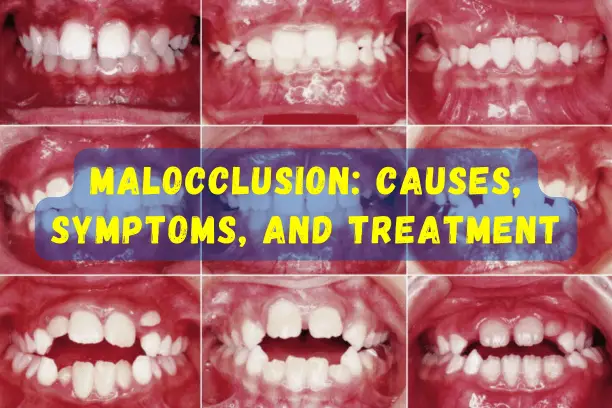Malocclusion: Causes, Symptoms, and Treatment

What Is Teeth Misalignment?
Teeth misalignment, clinically known as malocclusion, refers to improper alignment of the teeth and jaws. This cause can lead to problems with their teeth, including underbite syndrome, overbite syndrome, cross bite and overcrowed teeth. Malocclusions also affect eating, as well as speaking since the teeth do not complement or butt the nearest opposite set completely. Failure to correct malocclusion may also affect the general oral and digestive health of an individual. Orthodontists always carry out diagnosis and treatment of Orthodontic abnormalities that affect dental positioning with a view of aligning the teeth for function and esthetics. During the diagnosis, dentists categorize malocclusion through its type and its degree of severity.
What Causes Teeth Misalignment?
Some of the reasons for having misaligned teeth are genetic factors, oral habits, or even environmental conditions. If the jaw is small, it causes meals to quickly force the teeth to become crooked, whereas if the jaw is large, the teeth easily shift position.
Common causes of malocclusion include:
- Tooth loss
- Prolonged pacifier use
- Thumb-sucking habits
- Cleft lip or palate
- Injuries or trauma
- Tumors in the mouth
- Bottle feeding
- Impacted teeth
- Poor oral hygiene
- Enlarged adenoids or allergies obstructing the airway
Symptoms of Teeth Misalignment
The symptoms of malocclusion vary depending on its cause and severity. Key symptoms include:
- Misaligned or visibly crooked teeth
- Discomfort while chewing or biting
- Speech difficulties
- Breathing through the mouth
- Frequent biting of the tongue or cheeks
- Changes in facial structure
Types of Teeth Misalignment
In this case, several types of malocclusion impact the teeth and the jaw in a diverse manner. Common types include:
- Overcrowding: Resulting from the failure of the jaw to provide adequate space for the teeth, this consequently may be overlapping or crooked.
- Underbite: Occurs when the lower front teeth extend farther forward than the upper front teeth, also called anterior crossbite.
- Overbite: It is usually normal for the lower teeth to slightly overlap those of the upper arch, but the condition is severe if the upper teeth cut into the gums.
- Overjet: Characterized by the upper front teeth protruding horizontally beyond the lower front teeth, impacting speech and chewing.
- Crossbite: This occurs when the upper teeth fit outside the lower teeth, or if it occurs on two different areas of the jaw.
- Spacing: Problems of crowding or misalignment of permanent teeth are attributed to either a condition of having too much or too little space in the jaw.
- Missing Teeth: Known as hypodontia, this occurs due to improper tooth development or trauma.
How Is Teeth Misalignment Treated?
In general, the treatment of a teeth misalignment depends on the type and the extent of the malocclusion. Orthodontists are able to visually evaluate and analyze a patient’s condition and suggest further actions using simple observation and a panograph X-ray.
- Braces: Braces are the most common treatment for malocclusion. They can address a variety of issues, from crossbites to overcrowding and spacing problems.
- Retainers: Retainers are often used after braces to maintain the correct position of teeth while the jawbone stabilizes around them.
- Invisalign: Invisalign is used as clear alignment technique for minor orthodontic problems like minor spacing or crowding. It is less effective on cases where the misalignment is severe that is overbites or underbites.
Orthodontic treatment is also categorized depending on the severity of the problem at hand. When people are affected severely, as by overcrowding, the treatment may take longer while early intervention in childhood is faster, less costly. We also note that adults can be treated; possibly it will be longer, and it will be more expensive.
Teeth misalignment is a widespread problem; however it is treatable provided that accurate diagnosis has been made. Different reasons for preventive checkups for dental issues and early treatment will help maintain good oral health and functionality.






